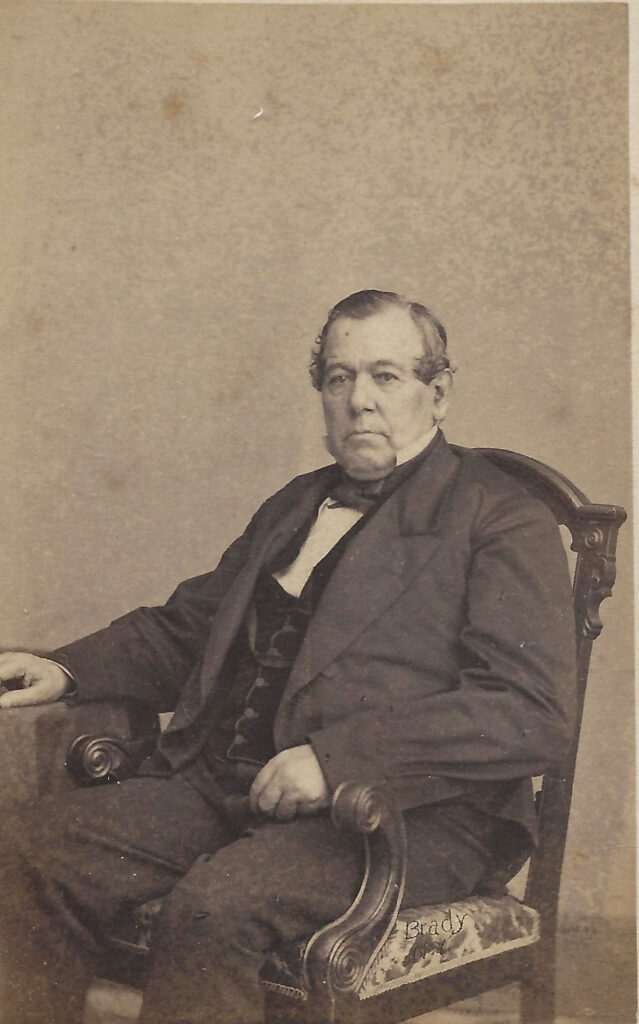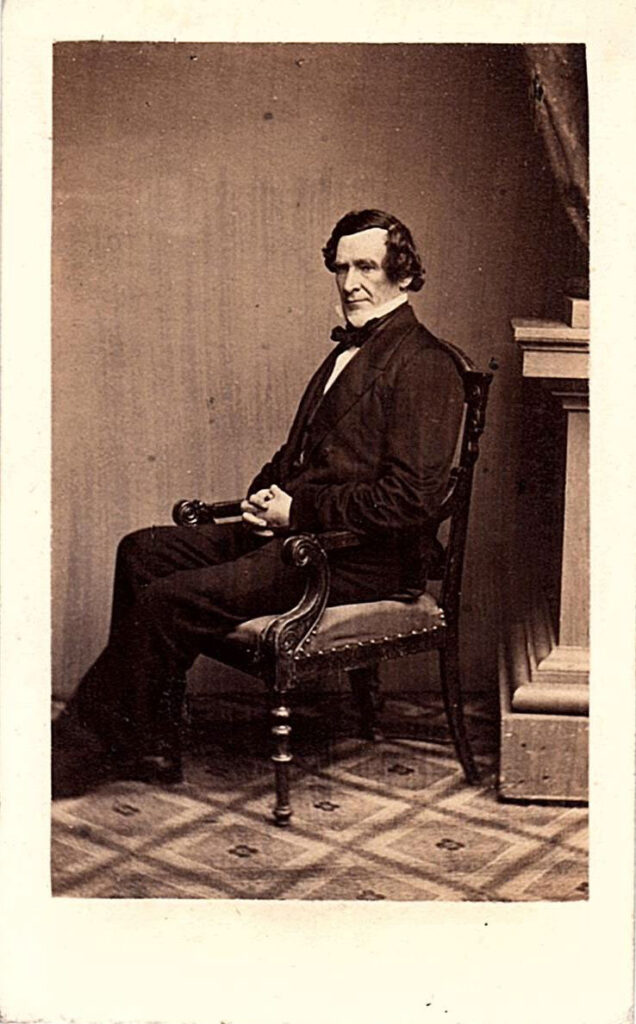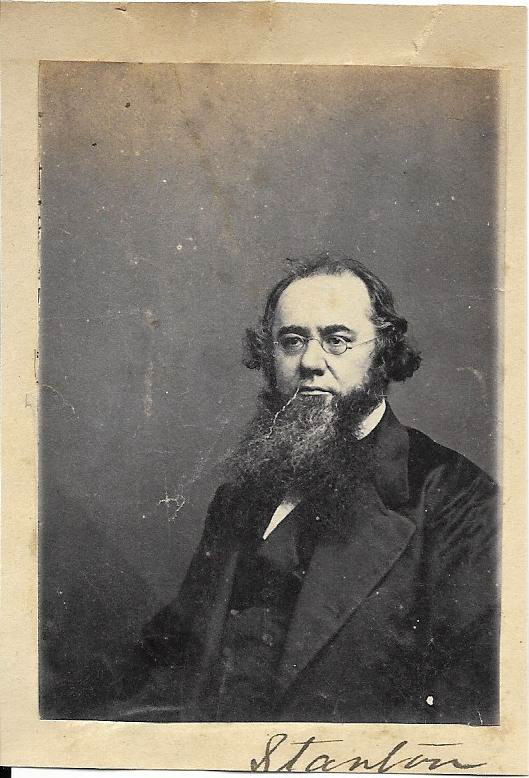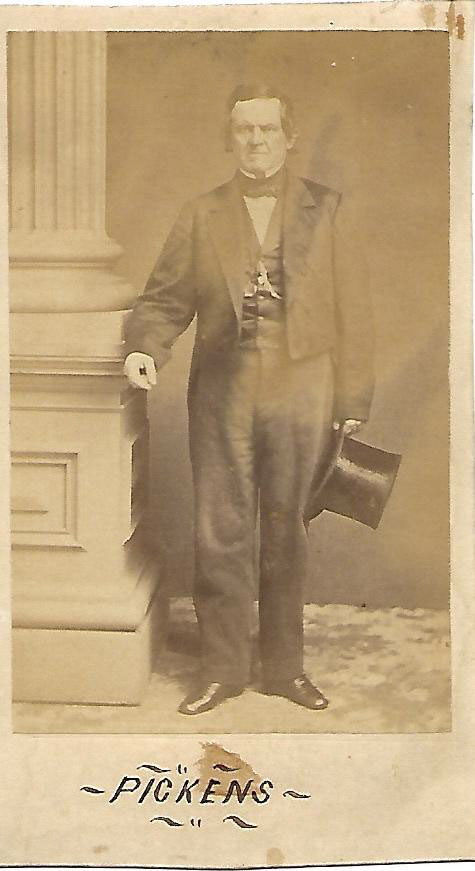Section #22 - The Southern States secede and the attack on Ft. Sumter signals the start of the Civil War
Chapter 262: A Panicked Congress Forms Select Committees To Avoid Disunion
December 11, 1860
A Select “Committee Of 33” Is Formed In The House
At long last the possibility of an imminent end to the sacred Union sinks in to all members of Congress.
The response, predictably, is to form special committees in search of acceptable compromises.
The House leads the way here on December 11 by forming its “Committee of 33” comprising one member from each of the thirty-three states – with 18 Free and 15 Slave.

The Committee Chair is 66 year old Tom Corwin, former Governor and Senator of Ohio and Secretary of the Treasury under Fillmore before returning to his previously held House seat in 1859.
Corwin is known as the “peacemaker” in the chamber, although he comes to this task with a sense of dread.
I have never in my life seen my country in such a dangerous position.
But the prospects for this group are apparent early on, when South Carolina and Florida refuse to attend, and four of the Republican members say they voted against having a committee in the first place.
Skepticism about the likely outcome abounds, with Know Nothing/American Party congressman Henry Winter Davis of Maryland labeling it…
A humbug…but as it will amuse men’s minds it may do no harm.
December 11-15, 1860
The Situation Continues To Unravel Around Buchanan

On the 11th, Buchanan also loses another cabinet member, as the decrepit Lewis Cass hands in his resignation. This results in a shift of Attorney General Jeremiah Black to Secretary of State and the addition of Edwin Stanton as the new AG.
He is a friend of Black and has helped research parts of the President’s December 3 message to Congress. But more importantly, Stanton, a Democrat at the time, is also linked directly to Senator Henry Seward, who will serve in Lincoln’s cabinet. This gives the Republican’s a direct line into the workings of Buchanan’s inner circle all the way up to the inauguration.

On December 12, the President names a reluctant former Governor of Maryland, Philip Thomas, to replace Howell Cobb as Treasury Secretary – a move that lasts less than five weeks before he too exits.
That same day, a caucus of seven Southern Senators and twenty-one Congressmen delivers more bad news, reporting that…
All hope of relief in the Union… is extinguished… the Republicans are resolute in the purpose to grant nothing that will or ought to satisfy the South.

Then on December 14, a new Governor of South Carolina is sworn in to replace William Gist. He is Francis Pickens, cousin of the iconic John C. Calhoun, an ardent backer of the 1832 “nullification” movement, and eager to lead his state out of the Union.
Buchanan dispatches the “doughface” Caleb Cushing to Columbia to begin negotiations with Pickens, only to learn that he has already sent a letter demanding the surrender of the Charleston forts.
Hearing this, Republican Senator James Grimes of Iowa offers his view of conditions in the White House:
The whole cabinet is tumbling to pieces, and…Buchanan…about equally divides his time between praying and crying. Such a perfect imbecile never held office before.
December 17-18, 1860
The Senate Sets Up A “Committee Of 13”

On December 17, 1860, a fiery speech by Ohio’s Benjamin Wade convinces the Senate that it cannot stand idly by as the Union dissolves and the threat of violent confrontation grows.
Wade warns Southerners that their outcries and demands will not force the Republicans to back down. As he says:
What have we to compromise? We went to the people…and we beat you upon the plainest and most palpable issue that ever was presented to the American people.
On December 18, 1860, the chamber responds by creating a “Committee of 13” to “inquire into grievances between the slaveholding and non-slaveholding states.”
The roster is star-studded and diverse in terms of regionality and party affiliation.
It is not by accident that two Kentucky men – Constitutional Unionist, John J. Crittenden, and Democrat, Lazarus Powell – are included. They represent the Border States, sitting between the lower South and the North, along with the tradition of Senator Henry Clay, the Great Compromiser of a prior generation.
Senators Named To The Committee Of Thirteen
| Name | Age | State | Party |
| William Bigler | 46 | Pennsylvania | Democrat |
| Jacob Collamer | 69 | Vermont | Republican |
| John J. Crittenden | 73 | Kentucky | Constitutional Union |
| Jefferson Davis | 52 | Mississippi | Democrat |
| James Doolittle | 45 | Wisconsin | Republican |
| Stephen Douglas | 47 | Illinois | Democrat |
| James Grimes | 44 | Iowa | Republican |
| Robert MT Hunter | 51 | Virginia | Democrat |
| Lazarus Powell | 48 | Kentucky | Democrat |
| Henry Rice | 44 | Minnesota | Democrat |
| Henry Seward | 59 | New York | Republican |
| Robert Toombs | 50 | Georgia | Democrat |
| Benjamin Wade | 60 | Ohio | Republican |
The priorities for the Committee of 13 are threefold:
- To prevent secession in South Carolina, if that is still possible.
- To avoid any further departures, especially in the upper South.
- If disunion occurs, to avoid armed conflict and civil war.
If these men cannot prevent disaster, it would seem no one can.
But here, as in the House, the start-up is hardly propitious, as Mississippi Senator Jefferson Davis labels the effort “a quack nostrum” and asks to be excused from serving. Pleas follow for him to change his mind, and he finally agrees to participate.